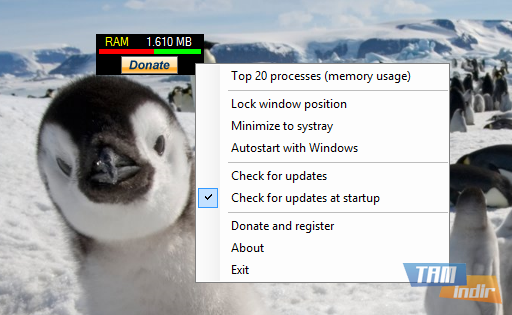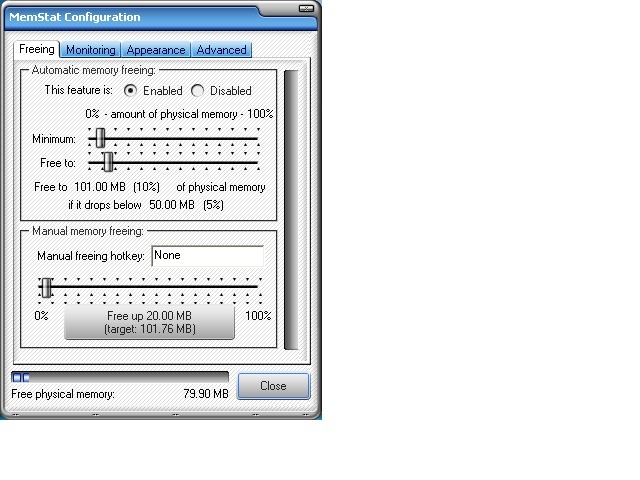

- Pc memory monitor how to#
- Pc memory monitor windows 10#
- Pc memory monitor code#
- Pc memory monitor windows#

Threads – the overall number of threads (yellow) and daemon threads (red). The maximum heap size is controlled by the -Xmx option. The heap size increases when new objects of reference types are allocated, and decreases when they are garbage-collected. Heap memory – the current usage of heap memory and maximum heap size. Right-click the necessary process in the Profiler tool window and select CPU and Memory Live Charts.Ī new tab opens in which you can see the amount of resources the selected process consumes.ĬPU – the CPU load for the given process.
Pc memory monitor windows#
Open CPU and memory live chartsįrom the main menu, select View | Tool Windows | Profiler. Sometimes it is enough to figure out the cause, and when it is not enough, it can give a clue for the further investigation. Follow C# Corner to learn more new and amazing things about Windows 10.IntelliJ IDEA provides a way to monitor live performance statistics for a running process.Īs opposed to viewing static figures, live data may help you to visualize resource consumption, identify resource-related bottlenecks, and understand how certain events affect the program performance.įor example, in the picture below, we can see how a memory leak looks like in the Heap Memory chart. Conclusionīy following the above steps, you can check the memory (random access memory) usage in Windows 10. You can also see these details by hovering with the mouse over each section of the graph. The above definitions of each part are standard and given in the memory composition graph in task manager. Memory that is not currently in use and that will be repurposed first when processes, drivers, or the operating system needs more memory.
Pc memory monitor code#
Memory that contains cached data and code that is not actively used. Memory whose content must be written to disk before it can be used for another purpose. Memory is used by processes, drivers, or the operating system. The memory composition graph is divided into four parts: There are two graphs in this memory option, the first graph shows the Memory usage and the second one shows the Memory Composition. In the task manager, the "memory option" under the "performance" tab gives the complete memory information, such as how much and what type of memory (RAM) is installed. Press the "Ctrl + Alt + Delete" key to open it.Ĭlick on the Performance Tab and then select the Memory option.Press the "Windows + X" key, and click Task Manager to open it.Then click Task Manager to open Task Manager Windows. Open the Task Manager in the following ways, If you want to see it in detail, use any counter given below. When the graph appears on the screen, the graph will indicate memory usage. To select Memory, search the list of counters and select Memory, click on Add button and then OK button. Type "perfmon" to open the Performance Monitor.Ĭlick on Green colored "Plus" Symbol to open add counters Window. It reflects how much memory (RAM) is being used and how much is available and also shows the total amount of memory (RAM). Resource Monitor will give you the exact information about RAM through the chart. Type "resmon" to open the Resource Monitor. Method 1 - Using Resource Monitorįrom the Start menu, open the Run dialog box or you can Press the "Window + R" key to open the RUN window.
Pc memory monitor how to#
This tutorial will show you various methods on how to check memory usage details in Windows 10.

By knowing this, the user can decide how much memory (random access memory) he or she needs for better performance. The user can come to see how much memory is being used by processes, drivers, or the operating system and how much memory is not currently in use and how much and what type of memory (Random access memory) is installed. It is not a well-known feature among users. The User can measure the memory-usage used by the system.
Pc memory monitor windows 10#
We can also use this feature in Windows 10 to check memory usage as well. A quality feature in the Windows family is to check memory (RAM) usage by using various in-built tools.


 0 kommentar(er)
0 kommentar(er)
